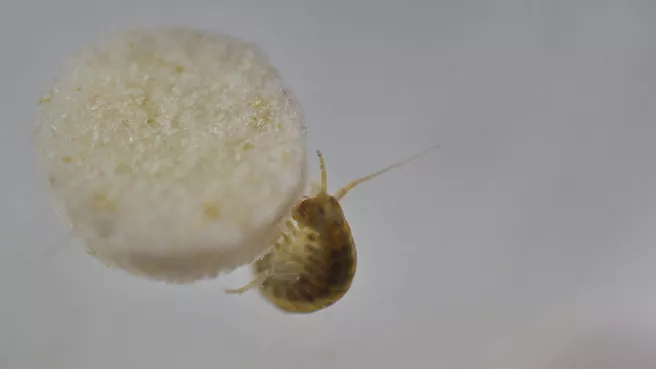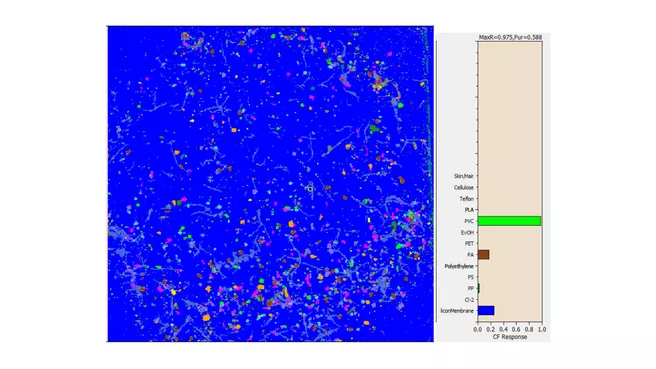"Microplastics are omnipresent. Even in the air, in addition to natural particles such as pollen, fungal spores and Saharan dust, there are man-made particles such as soot and microplastics," says Jürgen Geist, Professor of Aquatic Systems Biology and coordinator of the project MiPAq - Microparticles in the Aquatic Environment and in Food. "In the project, we wanted to develop an efficient method to identify microplastics in food or stream samples and at the same time gain new insights into the impact of microparticles." For this reason, the MiPAq project was created in 2017 with the participation of institutions from natural, environmental and engineering sciences at the Technical University of Munich in cooperation with Bavarian industrial partners, the results of which will now be presented on July 8.
The project "Microparticles in the aquatic environment and in food", in short "MiPAq", dealt in the last 4 years with the investigation of microparticles in the aquatic environment and in food, especially with regard to entry, behavior, detection and technical possibilities for reduction. Unique is the focus on the comparison of particle fractions from biodegradable (plastic) materials, conventional non-degradable plastics and natural (in)organic particles.
Under the leadership of the Chair of Aquatic Systems Biology (TUM) and funded by the Bavarian Research Foundation, the participating chairs together with the industrial partners were able to gather numerous new findings on the complex topic of microplastics.
At the beginning, the scientists were faced with the major challenge that there was still no recognized and uniform method for detecting microplastics and quantifying the relevant quantities and types of plastic. Fundamental questions, such as the retention of microplastics in wastewater treatment plants or their effects on aquatic organisms, were also unanswered.
"Through the interaction of chemical-analytical, ecological-ecotoxicological and engineering-scientific-technical expertise, new technologies and methods for detection and quantification could be developed and a multitude of new insights into the behavior of microparticles could be achieved," said Prof Dr. Jürgen Geist, the coordinator of the project.
Key research findings include:
1. reliable analytical methods.
- The establishment of a reliable detection methodology for microplastics using FTIR imaging in combination with artificial intelligence.
- The development of the "TUM Particle Typer" and thus the automation of Raman microspectroscopy for the detection of microplastics
- The development and validation of methods for the isolation of microplastics from different matrices: Groundwater, mineral water, beer, fruit pulp, herbal infusions, plastic packaging, wastewater, and seafood.
2. effects of microplastics on aquatic organisms.
- The development of new methods to assess the ecotoxicological effects of microplastics on aquatic organisms.
- Findings that the microplastic particles studied did not differ significantly in their effects on mortality, behavior, and reproduction from naturally occurring particles in the environment such as sand
3. analysis of food manufacturing and packaging processes.
- Identification of potential pathways for microplastics to enter food products
- Optimization of manufacturing processes to reduce microplastic input.
The work of the "MiPAq" project was not limited to the development of new methods and the analysis of microplastics in the laboratory. In particular, samples were taken and analyzed along the entire production process for the investigation of microplastics in various raw materials and process steps.
"The collaboration with industrial partners from the packaging and food industries, among others, is unique in this form and enabled the inclusion of questions that are important for practical applications as well as direct feedback of results," said Dr. Karl Glas, from the TUM Chair of Food Chemistry and Molecular Sensory Analysis.
The scientific staff at TUM were actively supported by the scientists on site. This was because both TUM researchers and food manufacturers and processors had a strong interest in the detection, evaluation and minimization of potential contamination in products and in the environment by microplastics.
The ecotoxicological experiments showed that there were no significant differences in acute effects on organisms such as mussels and amphipods between naturally occurring particles and certain plastic particles, as the environmentally relevant concentrations are usually low. In some cases, pollutants were even bound by the particles, reducing their impact on aquatic organisms. Investigations at two wastewater treatment plants have also shown that far fewer microplastics are discharged into the aquatic environment from these plants than was assumed at the beginning of the project. "These results give the all-clear to some extent. However, they show how important a scientific-objective evaluation is and, in view of the many unknowns that still exist, must not be taken as a carte blanche for the harmlessness of microplastics in the environment, where the plastic simply does not belong," says Prof. Geist.
Editing:
Susanne Neumann
TUM School of Life Sciences
Press- and Public Relations
Scientific Contact:
Prof. Dr. Jürgen Geist
TUM School of Life Sciences
Chair of Aquatic Systems Biology
Phone: +49 8161.71.3767
geist(at)tum.de


